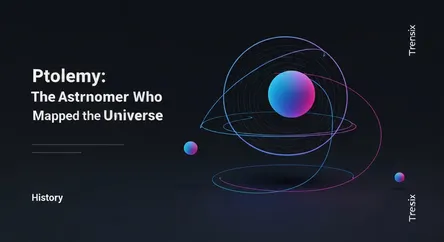History
Ptolemy: The Astronomer Who Mapped the Universe

Discover Claudius Ptolemy, the ancient astronomer and geographer whose geocentric model of the universe shaped science for over 1,400 years.
What is it?
Claudius Ptolemy was a Greco-Roman scholar who lived in Alexandria, Egypt, during the 2nd century CE. A polymath, he made significant contributions to astronomy, geography, mathematics, and astrology. He is most famous for his comprehensive astronomical treatise, the Almagest, which presented a sophisticated geocentric model of the universe with the Earth at the center. This Ptolemaic system used complex geometric tools like epicycles and deferents to explain the observed motions of the planets, sun, and moon. His other major work, Geographia, was a detailed discussion of cartography and a compilation of geographical coordinates for the known world.
Why is it trending?
Ptolemy's work represents the pinnacle of ancient Greco-Roman science and dominated scientific thought in Europe, the Middle East, and North Africa for over 1400 years. His books, particularly the Almagest, were the definitive texts on astronomy until the scientific revolution. The rediscovery and translation of his works during the Renaissance profoundly influenced European scholars. Though his geocentric model was eventually proven incorrect by Copernicus' heliocentric system, its longevity and mathematical ingenuity make it a crucial topic for understanding the history of science and the long, complex path to our modern understanding of the cosmos.
How does it affect people?
Ptolemy's influence is a testament to the enduring power of scientific models. For centuries, his system provided a functional, predictive framework for understanding the heavens, used for everything from predicting eclipses to casting horoscopes. His work in geography, despite its inaccuracies, provided a foundation for later cartographers and influenced the Age of Exploration; his maps were used by explorers like Christopher Columbus. Studying Ptolemy highlights how scientific understanding evolves, demonstrating that even long-accepted theories can be superseded by new evidence. His legacy is embedded in the history of astronomy and geography, forming a critical chapter in humanity's quest to understand its place in the universe.